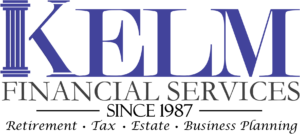Kelm Financial Services – Example Case
Company History
Smith Plumbing Company was founded in 1951 by Bob Smith, Sr. When his son Bob Smith, Jr. graduated from high school he joined his father in the family business. Bob Smith, Jr, worked his way up from laborer to Master Plumber gradually taking over as President with 20% stock ownership that had been gifted over the past 10 to 12 years.
Ownership Transition from 1st Generation to 2nd Generation:
The business continued to grow and by 1987 was valued at $ 1.6M. Bob Smith Jr bought out his father’s interest over the next 15 years with payments of $100,000 per year to the father. Buy out payments were funded by cash flow from the business. During the 15 years of payments, the father agreed to a reduced income of $50,000 per year. The final payment was made in 2002 and the business was then owned 100% by Bob Smith, Jr.
The 3rd Generation
Starting in 2005, the first of four sons, Bob Smith III, join the Company after graduating college. By 2009, all four boys are working for the Company. Their father, Bob Smith, Jr, (“Junior”) still maintains 100% ownership. In 2010, we start discussions regarding business succession / buy out strategies. The company now is valued around $6 Million. The real estate, which included buildings, land and adjacent property is owned by Junior and his wife. Junior’s income in 2011 was $480,000 a year with annual distributions based on a profit sharing formula we established, which included the boys on an equal basis. Total Distributions for the five of them averaged $500,000.
Ownership Transition to 3rd Generation
In 2012, the Buy Sell Agreement was established with Junior selling 100% of the stock to the boys over 13 years. Junior would at that time be 65 and move into a consulting position. The Buy Sell Agreement provided a $2,000,000 lump sum payment at the end of 2012 which would come from the company’s current assets which included over 3,000,000 in liquid assets. The Buy Sell agreement also provided for thirteen (13) annual payments of $250,000 into a funding vehicle specifically designed for this purpose.
Funding Vehicle
Executive Double Bonus Plan using a Structured Life Insurance Policy: The thirteen annual payments required by the buyout agreement were paid to Junior through the use of an Executive Double Bonus plan funded by cash flow of business and agreements by Junior and the four boys to forego annual bonus distributions. In addition to the $250,000 payments, the company paid Junior an additional “Double Bonus” amount to cover additional taxes that he would owe. To provide long term tax benefits and meet the needs of all family members, the Company selected an indexed universal life policy as the funding vehicle.
Benefits as Compared to a Cash Buyout:
There are several benefits to this type of structured buyout plan as compared to the cash buyout done in the previous generational transition.
- This plan provides a substantial tax free income to Junior and his wife.
- If Junior were to die, this plan provides an immediate death benefit to Junior’s wife that does not rely on the continued success of the business.
- This plan builds significant cash value which could be accessed on a tax advantaged basis.
